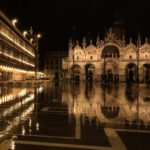Photography: Analog vs Digital – Grit or Bit? Art or Commerce?
Photography: Analog vs Digital – Grit or Bit? Art or Commerce?
The realm of photography has witnessed seismic shifts over the last few decades, pivoting from the classic film-based analog systems to the now ubiquitous digital platforms. This transition raises important questions: Is one superior to the other? Is this a battle between raw authenticity and technological convenience? Between art and commerce? Let’s delve into the depths of this ever-evolving debate.




Analog: The Grit of the Grain
The Essence: Analog photography refers to the traditional method where light is captured on a chemical film. The process is tangible, involving negatives, darkrooms, and chemicals.
Pros:
Tactile Experience: There’s a palpable satisfaction in handling film, manually adjusting settings, and developing photos in a darkroom.
Unique Aesthetic: Film imparts a distinct texture, grain, and color rendition that many argue cannot be genuinely replicated digitally.
Limitation Inspires Creativity: With limited shots on a roll, photographers often become more judicious and deliberate in their choices.
Cons:
Inconvenience: Developing film is time-consuming and requires specific conditions.
Cost: Shooting on film can be expensive, considering the costs of rolls and the developing process.
Less Flexibility: Post-processing alterations are limited compared to digital.

Digital: The Precision of Pixels
The Essence: Digital photography captures light using sensors and converts it into digital bits and bytes. The process is electronic, involving memory cards, computers, and software.
Pros:
Instant Gratification: Review shots immediately, making adjustments on the go.
Cost-effective in the Long Run: No recurring costs of buying and developing film.
Post-processing Power: Software like Photoshop allows for extensive post-processing and manipulation.
High Storage Capacity: Memory cards can store thousands of photos, depending on resolution and card capacity.
Cons:
Over-reliance on Technology: The ease of shooting can make photographers less discerning.
Lack of Organic Texture: Some purists believe digital photos lack the soulful grain and texture of film.
Obsolescence: Digital formats and technologies change rapidly, potentially making older digital photos hard to access in the future.
Grit or Bit? Art or Commerce?
Artistic Expression: Both mediums have their champions. Analog boasts an organic, nostalgic charm that many artists gravitate towards. Digital, on the other hand, offers a clean slate, ready to be molded into any artistic vision with the help of post-processing tools.
Commercial Viability: In the commercial world, digital reigns supreme. The flexibility, speed, and cost-effectiveness of digital photography align well with fast-paced commercial demands.
Conclusion:
The debate between analog and digital photography isn’t about determining a clear winner. It’s about understanding the essence and strengths of each medium. For many, it’s not a matter of choosing one over the other, but embracing both to expand their photographic horizons. Whether it’s the grit of film grain or the precision of digital bits, the true power lies in the hands of the photographer and the vision they wish to express.






